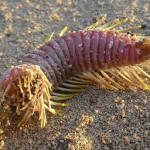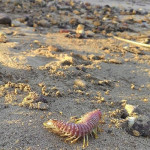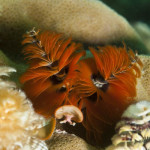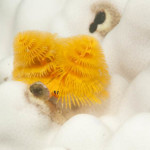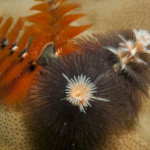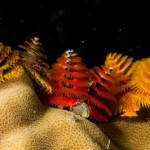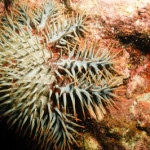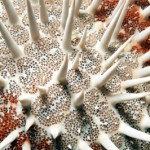Sugarcane Longhorn Stemborer (Dorysthenes buqueti)
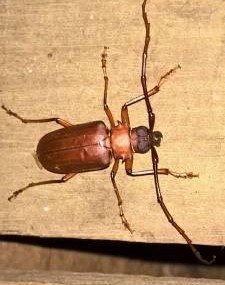
Image Copyright Nina Baum
Observed: February 2016
Observed By: Nina Baum
This species of longhorn beetle is considered to be a pest since its larvae dig into both sugarcane and bamboo leading to the death of plant.
It is a native insect of Southeast Asia.
Sugarcane Longhorn Stemborer Wikipedia
Diving Beetle (Dytiscidae)
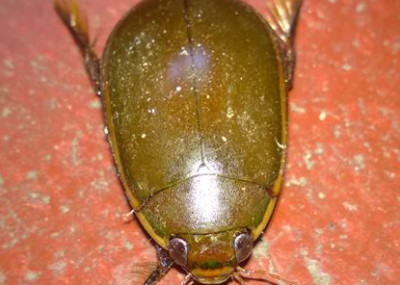
Image Copyright Napha Kotkangplu
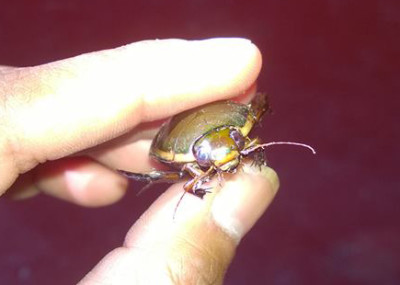
Image Copyright Napha Kotkangplu
Observed: February 2016
Observed By: Napha Kotkangplu
The diving beetles are a family of round-bodied beetles that grow to a maximum length of 4.5 centimetres.
There are loads of species of them and this… is one of them. If you’re a beetle expert feel free to let us know which one. The problem is that there are 4,000 species of diving beetle and they all seem to be small round and brown.
Life is short people so let’s just leave it at that for now shall we?
Diving Beetle Wikipedia
Common Earl
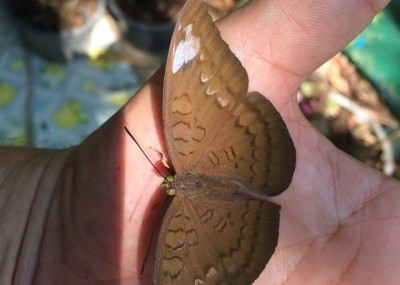
Image Copyright Hans Henrik Hansen
Last Observed: February 2016
Observed By: Hans Henrik Hansen
Butterflies get some strange names. Naming one the Common Earl suggests that there should be a rare earl or something out there that is altogether more exotic.
The Common Earl is a species of nymphalid butterfly native, even common, to South and Southeast Asia.
Common Earl Wikipedia
Clethyrogna Turbata
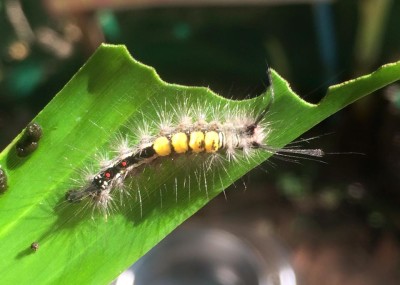
Image Copyright Hans Henrik Hansen
Observed: Koh Chang, December 2015
Observed By: สุธนัย ครุพานิช
The adult form of this moth species is a comparatively drab reddish brown colour but the caterpillar, as you can see, more than makes up for this by being a furry explosion of red, yellow and black.
Clethyrogna Turbata Project Noah
Giant Centipede (Scolapendra subspinipes)
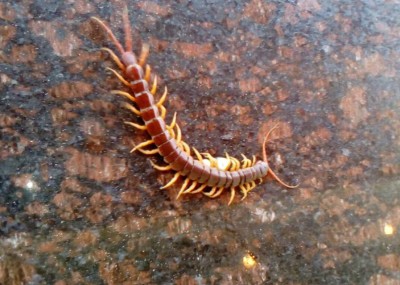
Image Copyright Teerasak Thomas Suamcheepmasau
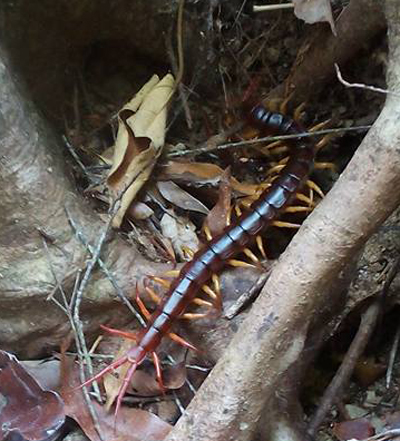
Image Copyright Sukanya Darasawang
Last Observed: January 2016, Koh Chang
Observed By: Teerasak Thomas Suamcheepmasau, Sukanya Darasawang
You have to draw the line somewhere. You can go as far as you like with the wonders of nature argument but at some stage you just have to step back and say that the Giant Centipede is a real nasty piece of work. Admire them if you must but make sure you do it at a distance for this is an extremely aggressive, fast-moving, highly poisonous predator. They eat whatever they can kill, and that’s a lot.
They are one of the world’s largest species of centipede and grow up to 20cm in length (I’m sure I’ve seen bigger on Koh Chang though).
Centipedes have only one pair of legs per segment whilst millipedes have four. This means that they can move far quicker.
They attack using a pair of modified legs on their head called forcipules that connect to venom glands.
Their poison is extremely painful but rarely fatal to humans.
You are most likely to encounter them in leaf litter or rotten wood – a compelling argument for avoiding gardening.
Giant Centipede Wikipedia
Bearded Fireworm (Hermodice carunculata)
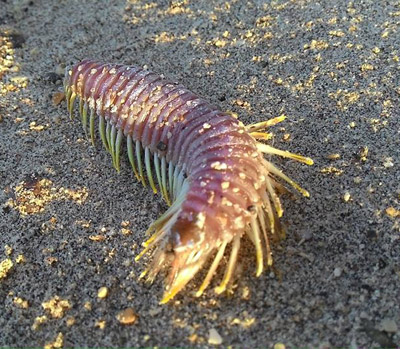
Image Copyright Teerasak Thomas Suamcheepmasau
Observed: Koh Chang, December 2015
Observed By: Teerasak Thomas Suamcheepmasau
The bearded fireworm is a strange marine creature that looks like a centipede on first glance (especially when seen on land like this specimen).
You will usually see them underwater, they are actually a tyle of marine bristleworm growing up to a maximum of 30cm in length.
The creature moves slowly but you should take great care not to accidentally touch it since its bristles contain a powerful neurotoxin that causes burning and intense irrtation as well as occasionally nausea and vomiting.
Bearded Fireworm Wikipedia
Image Copyright Teerasak Thomas Suamcheepmasau
Image Copyright Teerasak Thomas Suamcheepmasau
Barrel Sponge (Xestospongia testudinaria)
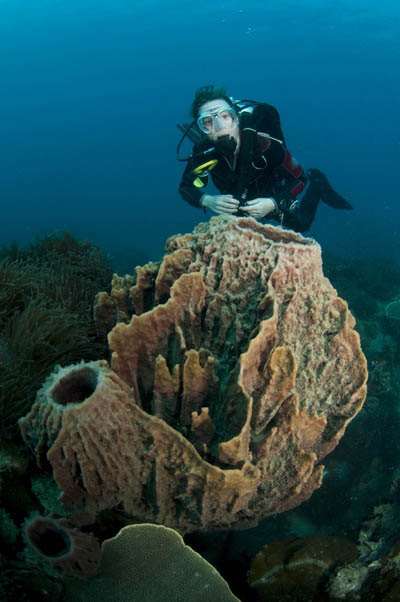
Image Copyright Jonathan Milnes
Observed: Koh Chang Reefs, October 2015
Observed By: Jonathan Milnes
Xestospongia testudinaria is a species of barrel sponge in the family Petrosiidae. It very closely resembles the giant barrel sponge (after all it is really large and looks like a kind of spongy barrel) but that species is only found in the caribbean sea.
Barrel Sponge Wikipedia
Christmas Tree Worm (Spirobranchus giganteus)
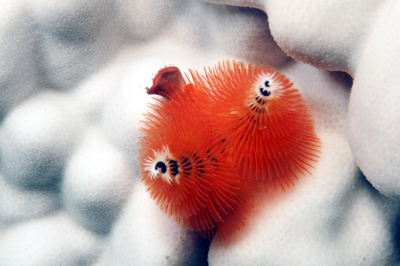
Observed: Koh Chang Reefs, December 2015
Observed By: Jonathan Milnes
The brightly-coloured spiral-bodied christmas tree worm is a type of tube-building polchaete worm.
These worms live inside rocky tubes that they build withing coral structures. They emerge from these tubes to feed, gathering in microorganisms using their tree-like array. When threatened though they whip rapidly back into their rocky home and disappear in a flash. A fun sight for divers and snorkellers.
Christmas Tree Worm Wikipedia
Image Copyright Jonathan Milnes
Image Copyright Jonathan Milnes
Image Copyright Jonathan Milnes
Image Copyright Jonathan Milnes
Crown-of-thorns Starfish (Acanthaster planci)
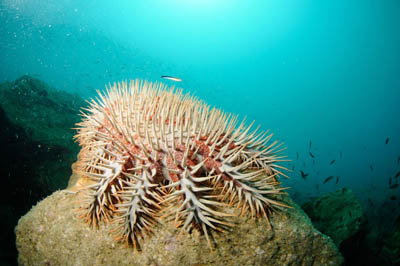
Image Copyright Jonathan Milnes
Observed: Koh Chang Reefs, December 2015
Observed By: Jonathan Milnes
The Crown-of-thorns starfish is a large 25-25cm wide starfish that is a voracious predator that feeds on corals.
It is named after the biblical crown of thorns since that is what its poisonous thorn-like spines resemble.
The crown-of-thorns has a few natural predators (although some species of triggerfish and snails feed on them) and so populations can grow to such high numbers that they can totally destroy coral reefs. So large numbers of crown-of-thorns seastar are a very bad thing for a coral reef and it is not uncommon for people to take action to control their numbers thus protecting the reef itself.
Crown-of-thorns Starfish Wikipedia
Image Copyright Jonathan Milnes
Image Copyright Jonathan Milnes
Black Sea Urchin (Diadema antillarum)
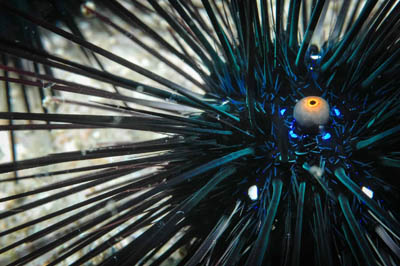
Image Copyright Jonathan Milnes
Observed: Koh Chang Reefs, December 2015
Observed By: Jonathan Milnes
Watch out for the sharp and brittle spines of the black sea urchin. A trailing hand or foot that brushes against them will cause them to break off in the flesh and despite having no poison they can easily cause infection and are the very devil to remove.
The black sea urchin, as you’d imagine has a black-coloured body and spines. It is massively widespread and is the most abundant herbivore on the coral reefs of Koh Chang.
Black Sea Urchin Wikipedia









